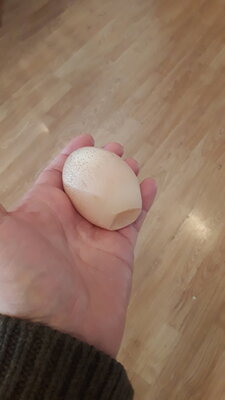Abrios
In the Brooder
- Nov 20, 2020
- 18
- 15
- 29
I rescued a trio of golden comet chickens that have lice. I am estimating their age at 2ish. They are being treated and the lice is just about gone. One of the girls had it really bad. She does not have any feathers on her underside and her skin is very pink. It looks uncomfortable. She is the smallest of the three. Well she lays eggs about 5 days a week, even though it is winter, but the shells are super thin. If I get the egg right after she lays it I can salvage it. But as soon as another hen gets in there, they break it. I have oyster shells available to them all day and there egg shells as well. I ferment feed and add the egg shells back into the fermented feed. What else can I do to help her. Do I just need to wait for her overall health to improve? Any ideas would be very appropriate .




